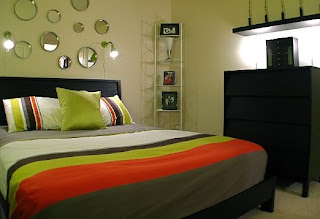Achieving the dream of off grid living and generating all your own electricity for free is ambitious, but not impossible. Achieving it with
home made solar energy is even more challenging. Producing enough home made solar energy to power your entire home will require a serious investment of time, effort, and money-but it can be done. This article will give you some tips on how to do it.
Patience Is a Virtue First, don't call your power company to disconnect you from the local power grid after building a single solar panel. Completely off grid living through home made
solar energy requires a lot of solar panels, a lot of batteries, and most importantly a lot of time to build it all. At first, use home made solar energy to compliment your home's electrical needs and lower your power bill. Once your power bill is down to almost nothing, you'll know you can finally try off grid living without too much disruption to your lifestyle.
Do the Math To achieve off-grid living, you first need to know how much electricity your home consumes. The average American home consumes an average of 588 kilowatt-hours (kWh) per month, but this can vary dramatically due to the size of the home, the number of appliances, the number of residents, and even the time of year. For example, many homes may double their power consumption during the summer months when the air conditioning is running. It's time to pull out your old power bills, preferably a whole year's worth, if you have them. These will tell you how many kilowatt-hours of electricity your household consumed every month. Depending on your power company, it may also include your average monthly electrical consumption.

Now that you know how much electricity you'll need for off grid living, calculate how many solar panels you'll need to build. It's actually easier to calculate how many solar cells you'll need, and divide the cells up into panels full of solar cells later. Unfortunately, how much electricity a single solar cell can generate varies, depending on size, location, time of year, cloud cover, etc. Fortunately, if you contact the manufacturer or distributor you plan to buy the solar cells from, they can usually supply you with a reliable number of average watts produced per solar cell per day.
Finally, figure out how many batteries you'll need to store the home made solar energy generated during the daylight hours. During the evening, all you'll have to power your home are the batteries. Wet-cell lead-acid batteries (car batteries) are cheap, but ill-suited to solar power. Deep-cycle gel or AGM batteries are more expensive, but are designed to be drained and recharged thousands of time. They will last much, much longer than car batteries.
Based on the math you've done earlier, you know how much electricity your home requires daily. Once you've chosen a battery type, look up its storage capacity. Divide your home's daily power consumption by the battery's storage capacity, and you'll know how many batteries you'll ultimately need.
Minimize Your Power Consumption Let's face it: we've all gotten used to unlimited electricity. We use as much as we want, and we worry about paying for it all at the end of the month. Once you switch to off grid living, you'll have a finite amount of home made solar energy. In order to make sure it lasts, you'll need to be more careful in how you use it.
If you really want to try off grid living, generating all your electricity from
home made solar energy, you'll have to accept a few changes to your lifestyle. You won't be able to leave your computer on 24/7, for example, and you'll have to be very thrifty with your heating and air conditioning use. While building your home made solar energy system, gradually start equipping your home with more energy efficient appliances. Start by replacing your incandescent light bulbs with energy efficient CFL light bulbs. Now is the time to buy a new, energy-efficient refrigerator, freezer, hot water heater, furnace, stove... you get the idea. If you can easily and cheaply replace electrical appliances with non-electrical appliance, do so. For example, install a gas-powered stove, hot water heater, or even furnace.
The more difficult part, however, will be in changing your behavior. Start training yourself to turn off the light when you leave a room. Turn off any appliance when not in use. Shut off the central air/heating vents of rooms you don't regularly use. Hang your laundry out to dry instead of using a tumble dryer. There are lots of ways to save electricity with minor modifications to your everyday behavior.
Off grid living can be a challenge, but surviving off your own home made solar energy can also be extremely rewarding, and safe you enormous amounts of money over the course of your lifetime.


































